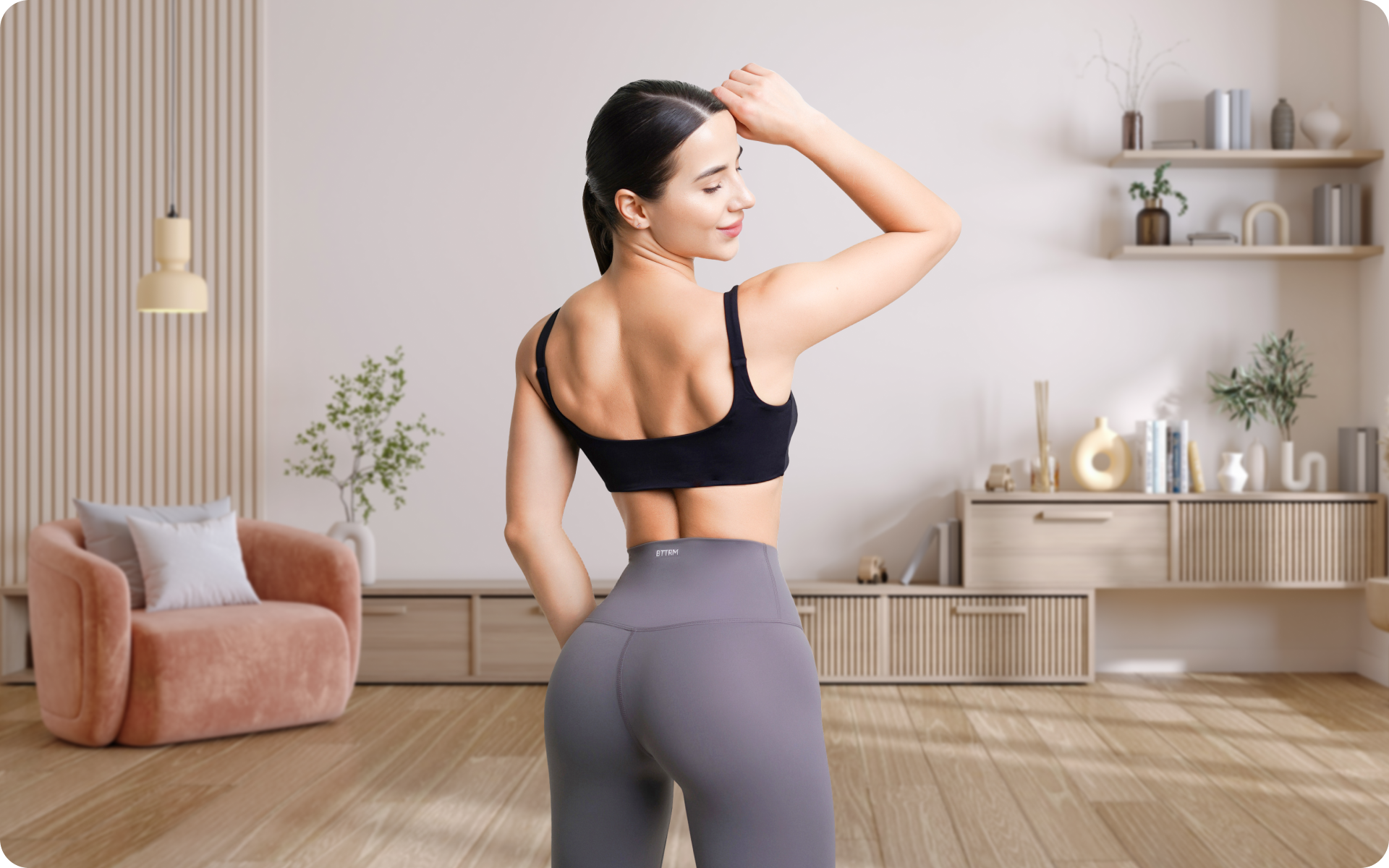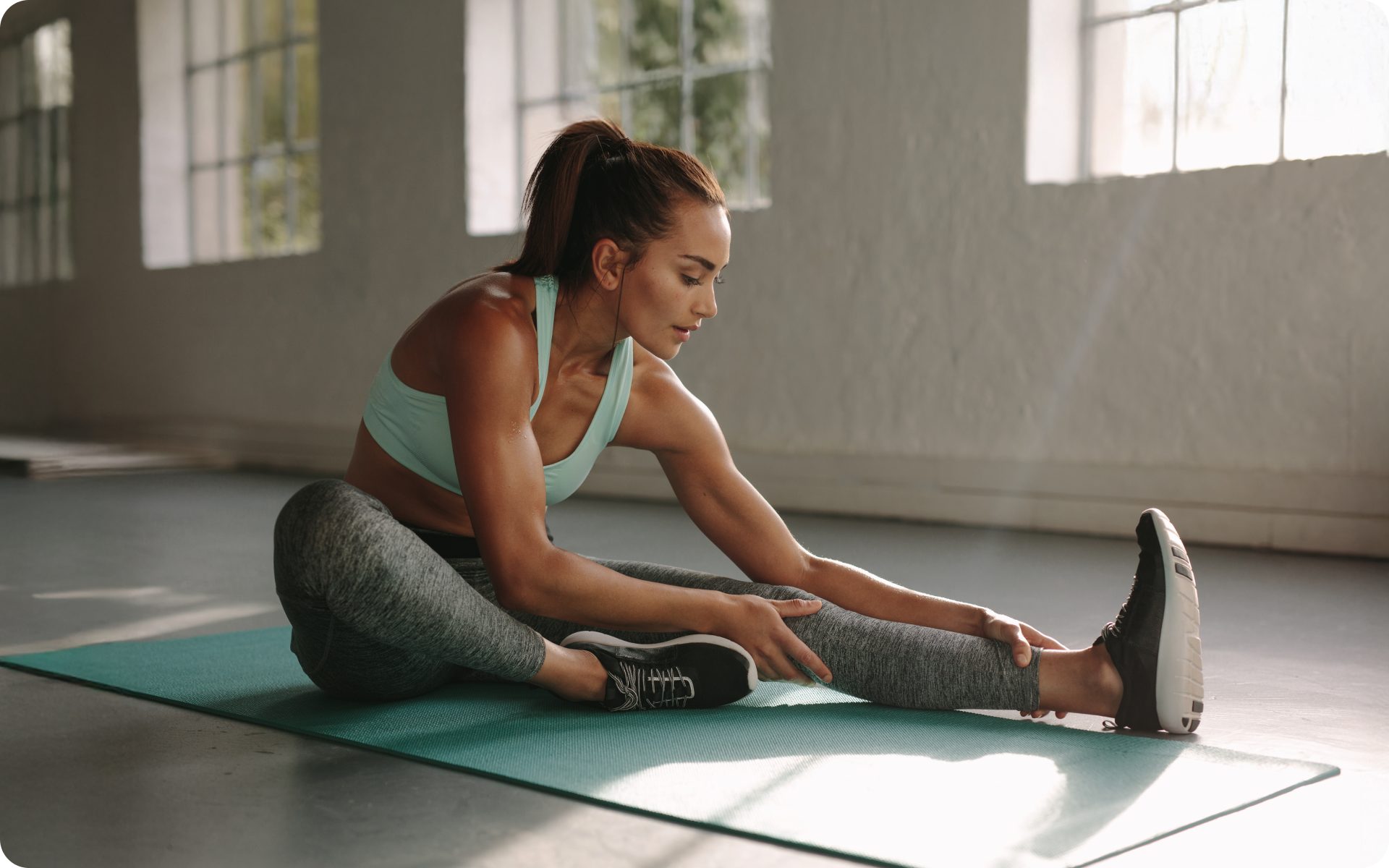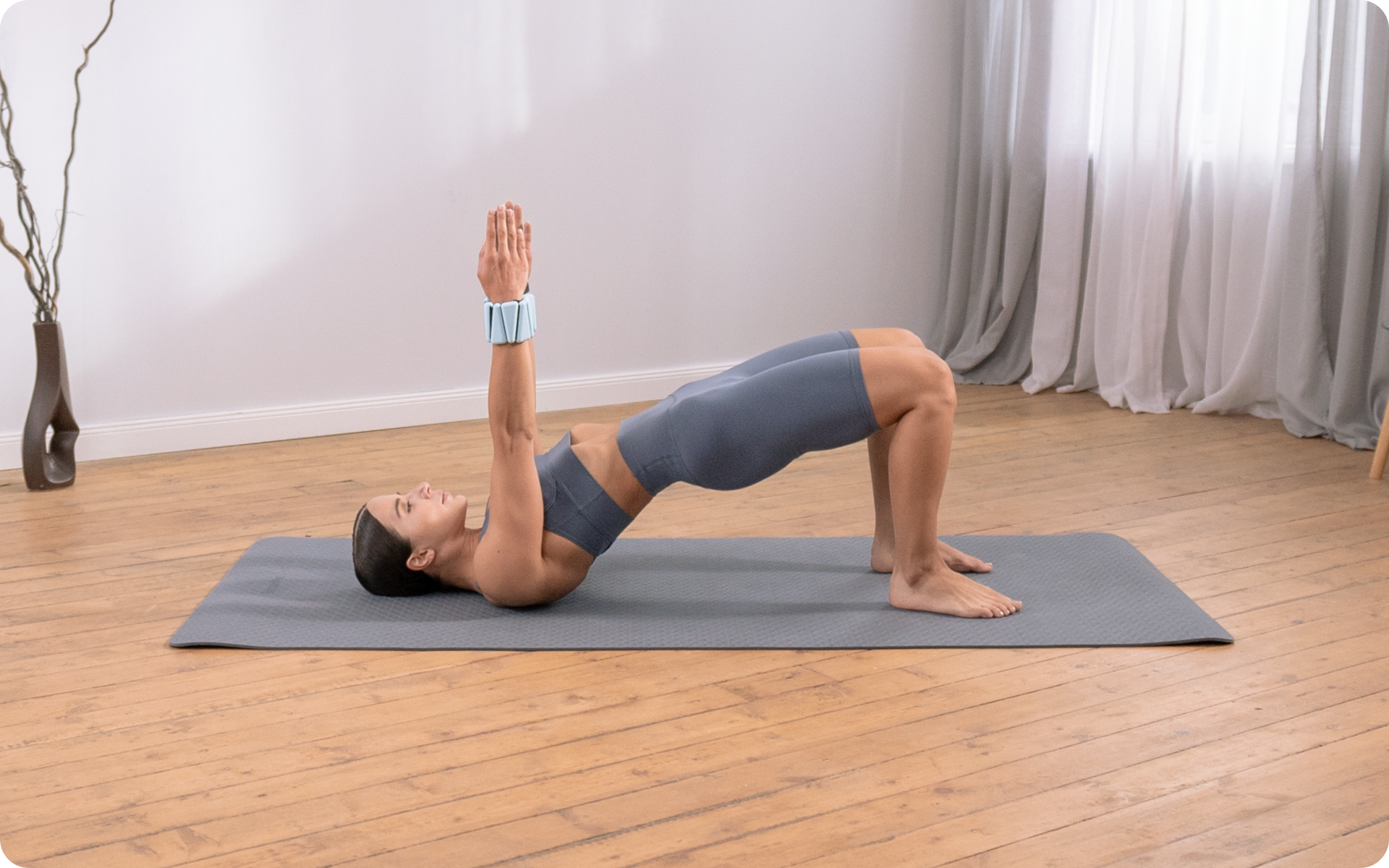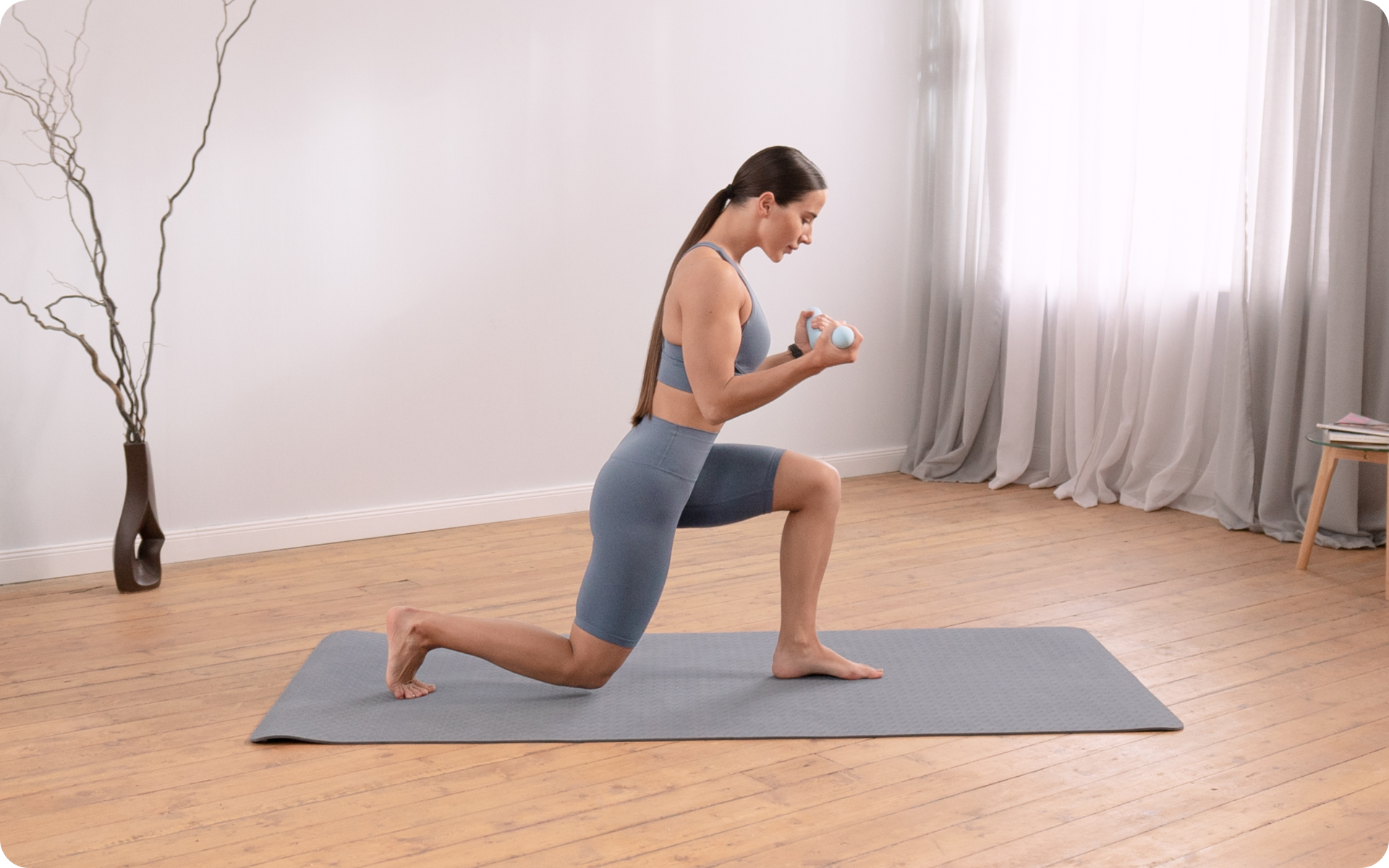If you’re looking for a peachy bum, squats are probably center stage in your workout routine. While the coveted “peach booty” has become a fitness trend, it’s important to acknowledge that squats offer benefits beyond aesthetics.
The peach booty misconception deters some men from incorporating squats into their workout regimen. Squats have several benefits for men as well. Squats cater to all genders and fitness objectives, including benefits like stronger and more mobile joints, a fortified core, and sustained workout engagement. It’s time to relook at squats as a holistic approach to physical well-being, challenging the misconception that they are exclusively for a “peach booty”.
Beyond that sculpted booty, squats can also contribute to fortifying joints like ankles and knees, and promoting core strength. They also offer accessibility, without the need for specialized equipment.
As proof of this, squats are an essential component of cross-training, aiding in the prevention of injuries, supporting recovery, and promoting balanced muscle development. The diversity of squat variations ensures that there’s a squat for every fitness level, allowing beginners and pros alike to choose their intensity level.
While the magic number of squats remains elusive, a focus on proper form, intensity, variation, and balanced frequency unlocks the true potential of squats as a path to overall fitness.
Want to build an attention-grabbing bubble butt, blast away fat that’s stored in all the wrong places, spring-clean your diet, turn back the clock on your skin, skyrocket your self-confidence and shatter your insecurities? Check out the BetterMe app and set this plan in motion!
Reasons As To Why You Should Do Squats
Many people want to do squats so that they can have bigger and better-shaped booty. It has gotten to a point where quite a few think that squats are only good for that. In certain gyms, it is rare to see men doing squats because of that misconception. However, there are several benefits, particularly for men (7).
There are many reasons people of each gender should do squats. Here are some of the reasons:
To get stronger and more mobile joints.
When you do your squats correctly, you will notice that your joints are engaged, namely your ankles, hips, and knees. Squats are your ticket to strengthening the muscles surrounding the joints that help stabilize your joints, shielding you from injury and some joint-related diseases (1). Strength training also improves fluid movement between joints, better lubricating the joint and reducing pain from inactivity.
To have a strong core
Doing squats helps strengthen your core. You should note that strengthening your core and doing squats go hand in hand. The more squats you do, the stronger your core. Having a stronger core makes you better able to crush your squats. If you want a strong core, joining one of the numerous squat challenges out there might be just what the doctor ordered.
Keep you engaged.
When it comes to squats, there is something for everyone. There are so many types and variations of squats that you can never get bored. There are squats recommended for every gender, every body type, people of every age, fitness level and so on. With squats, you can never get bored; you can only get tired.
They can be done anywhere.
Most of these other types of exercises require you to be at a particular place either the gym, a field, or even a sports center. Some require you to have equipment. The best thing about squats is that they can be done anywhere at any time. Are you wrestling with the afternoon slump in the office? Lost for motivation on a lazy Sunday at home? Waiting for the oven to ding or for your washing machine to do its job? Squats it is!
They help you get better elsewhere.
Most people are usually cross-training, and if they don’t, they should be. What is cross-training, you may ask? This is when you train all across the board. A good example is a cyclist who goes swimming, does yoga and lifts weights instead of strictly staying in one lane. Cross-training is important because it (1):
- Helps prevent overuse injury. This kind of injury happens when you only do one type of exercise or workout. Cross-training helps prevent this as you will be able to do different types of exercises.
- Helps athletes and all people bounce back from injuries.
- It helps condition your entire body and raise overall fitness. Cross-training means you are not concentrating on only a particular body part or exercise. It helps you be well-rounded and balance everything in your body.
How do squats help with this? For you to effectively cross-train, you need to have a strong core and lower body. Squats are exactly what you need to achieve that.
Look good
Squats help shape your legs and your booty, and therefore you end up looking fantastic.
You get a complete leg workout.
When you do your squats correctly, you can strengthen most of the muscles in your legs. As you lower yourself down during a squat, you are primarily working your hamstring (2). When you stand up during your squat, you are working muscles like the glutes and the quadriceps.
Read more: How Many Calories Does 100 Squats Burn?
Types Of Squats
There are different types of squats. This is what makes squats one of the go-to exercises. With that said, what are the different types of squats?
Bodyweight Squat
This is the squat that we can say paved the way for all other squat variations (12).
How to do a basic bodyweight squat:
- You start by putting your feet shoulder-width apart. Your toes should be slightly out, and your hands should be at your side.
- The next step is to hinge your hips and to bend your knees as you sit back as if you are going to sit down and allow your arms to raise up in front of you. While doing this, you need to make sure your knees don’t fall inward and that your back stays straight.
- When your thighs are parallel to the ground, stop and raise up by pushing through your heels to return to the starting point.
Goblet Squat
To perform this squat you: (10)
- Stand with your feet hip-width apart and hold a kettlebell in front of your chest. While you are doing this, you need to make sure your elbows are pointing towards the floor or down.
- The next step is to push your hips back and bend your knees into a squat. After that, return to your starting position and do this all over again.
Wall Squat
This is advisable for people who have hip or knee problems. This is because the wall will help offer extra support. Let’s take a look at how to perfect a wall squat in 6 easy steps.
To do this you need to:
- Stand with your back against a wall.
- Make sure your feet are at least 12 inches away from the wall.
- You then bend your knees while dropping into a squat position. While doing all this, you need to keep your back against the wall. Your back will slide down the wall as you enter the lowest part of the squat.
- Stop when your thighs are in a position parallel to the ground.
- When you get there, push up through your heels back to the original position.
- Repeat for a few reps of 10 each.
Kang Squat
To do this:
- You need to stand up straight with your feet wider than hip-distance apart. Make sure your toes are pointed slightly outward and place your hands behind your head.
- Hinge your hips and lower your torso down until it is almost parallel to the ground.
- Sit your hips back and bend your knees until your thighs are parallel to the floor.
- Once in that position, return to the original starting position by pushing up through your heels.
Pistol Squat
This type of squat is a bit advanced. This is because it is done using one leg at a time.
How to do a pistol squat:
- Stand with your feet together and extend your hands out in front of you.
- Lift either your left or right leg up from the floor and extend it in front of you. Squat down using the other leg, lowering yourself until the leg lifted is parallel to the ground.
- Stand up and repeat with the other leg.
Modified Pistol Squat
Just like the other variation discussed above, this also requires you to do it using one leg.
This is how you do the modified pistol squat.
- Sit down on a chair with a dumbbell (optional) held by both of your hands just in front of your chest.
- Lift one of your legs so that it is hanging above the ground.
- Push up through the leg that is planted on the floor until you are standing with that one leg.
- Bring the hanging leg to a ninety-degree angle at hip height.
- Return to the initial seated starting position and try with the other leg.
Side-Kick Squat
This is the basic squat with an added kick to it. This type of squat helps increase your balance.
How to do it:
- Drop down into a basic squat position
- When you are coming up, kick one of your legs up as high as you can.
- Go back to the basic squat position and do this again with the other leg.
Squat Jacks
To do this you need to:
- Drop down into a basic squat position.
- As you begin to return to standing position raise your arms and jump with your feet together before hopping back into hip width stance, lowering arms, and dropping back down into a squat..
Squat Walk
This helps increase your endurance. It is basically a squat with walking attached to it.
To do this you need to:
- Drop down into a basic squat position.
- Without coming up, walk one foot in front of the other. Try and see how far you can go.
Wide Stance Squat
This is also called the sumo stance (4). This is because of how wide you have to put your feet while doing it. It helps activate the muscles of the inside of the thigh. This exercise can also be called a Plié Squat, which is described below.
Plié Squat
To do a Plié Squat you (3):
- Stand with your legs apart. Make sure there is about two feet of space between them.
- Make sure your legs are turned out so that your inner thighs are pointing forward.
- Place your hands in front of your chest.
- Bend your knees and move your tailbone towards the floor. Continue to lower yourself until your thighs are parallel to the floor.
- Return to the original position.
<strong>When it comes to weight loss, progress is made by inches, not miles, so it’s much harder to track and a lot easier to give up. BetterMe app is your personal trainer, nutritionist and support system all in one. <a href=https://quiz.betterme.world/first-page-generated?flow=2228&utm_source=Blog&utm_medium=Blog&utm_campaign=how_many_squats_a_day>Start using our app </a> to stay on track and hold yourself accountable!</strong>
What happens if I do 100 squats a day?
Many people have hopped on the Squat Challenge trend, which requires you to do 100 squats a day for 30 days. The benefits are far-reaching, squats will aid mobility in day-to-day activities like walking, climbing, and lifting as well as improve advanced physical performance. It is advised to take some rest days within your 100 squat challenge. Some of the implications for 100 squats a day are as below:
Enhanced Lower Body Strength
A routine of 100 squats a day will significantly boost lower body strength. Squats target key muscle groups, including the quadriceps, hamstrings, glutes, and adductors, resulting in toned muscles and overall leg development.
Technique Trumps Depth
While we are often in awe of a good squat depth, it should not come at the cost of proper technique. Depth over technique can lead to serious issues including rounded lower back and tucked hips. Maintaining a neutral spine and feet in line with your knees is crucial to avoid injuries.
Variety Adds Spice and Benefits
Don’t set yourself up for failure with a monotonous squat routine. To keep things interesting, add variations like sumo squats, narrow squats, and split squats. These variations not only add excitement but also target different muscle groups, such as narrow squats focusing on quads and sumo squats emphasizing inner thighs.
Squats as a Body Diagnostic
Squats can serve as a diagnostic tool to detect issues. For instance, collapsed foot or back arches during squats can reveal potential strain areas, which can help put together corrective actions before further injury.
Core Strength is Non-Negotiable
A strong core is the bedrock of effective squat technique and reducing the risk of lower back pain. A combination of crunches and deep core exercises like dead bugs is a great place to start (9).
What will 30 squats a day do?
Consistency is key with any form of exercise. It doesn’t matter whether you do 100 or 30 squats a day as long as you can show up consistently. It is advised to take some rest days in your 30 squats a day challenge.
1. Improved Joint Flexibility
30 squats a day keeps the orthopedist away! Squats require a full range of motion, improving joint flexibility, particularly in the hips, knees, and ankles. There will be a gradual increase in flexibility and mobility leading to better form and more fluid daily movements.
2. Toned Glutes for a Sculpted Appearance
Yes, 30 squats a day will also get you the coveted peach booty. A combination of squat variations done for 30 days will lead to enhanced strength and a sculpted butt.
3. Improved Balance and Stability
Squats are a compound exercise that engages several muscle groups, including those for balance and stability in the core and lower body. Improved stability benefits your day-to-day activities while reducing the risk of injuries and improving posture.
How Many Squats Should I Do For It To Be Effective?
Are you wondering how many squats you need to do for an effective workout? The answer to this golden question can vary based on fitness levels, goals, and overall health. It is important to bear in mind that as your strength and endurance improve, you can gradually increase the number of squats and incorporate more challenging variations.
Don’t be a hero and overtrain on the very first day, listen to your body. If you’re new to squats, don’t be afraid to start with a manageable number and gradually increase the intensity. While there are several squat alternatives, nothing quite does it like this exercise! Here are some tips to help you decide your ideal number of squats:
1. Start with a Beginner-Friendly Set
If you are new to the world of squats, start small with 3 sets of 8 to 12 squats. This allows you to identify the muscles being put to work and helps achieve the proper form. At this stage it helps to observe yourself in the mirror to adjust your feet, keeping heels on the floor,and correcting any arches in your back.
2. Gradually Increase Repetitions
Don’t be in a rush to increase your reps. As your strength and endurance progress, gradually the number of reps you’re able to do without overworking yourself, will also increase. Aim for 3 to 5 sets of 15 to 20 squats to challenge your muscles. This step-by-step approach gives your body room to adapt and reduces the risk of overtraining.
3. Incorporate Variations
To level up your fitness game and keep things fresh, experiment with wall squats, sumo squats, narrow squats, or other variations. Variations target different muscle groups improving overall lower body strength and structure. Besides, variety not only enhances the effectiveness of your workout but also keeps it exciting.
4. Listen to Your Body
Pay attention to how your body responds to your squat routine. Any continued discomfort or pain often indicates incorrect posture or overtraining with too many reps. It is a common misconception to comprehend pain after a workout as a sign of a good workout but a closer look might tell a different story.
5. Consult with Fitness Professionals
Before beginning your squat regimen, consider consulting with a professional. There are several face-to-face and online options available to consult fitness professionals offering personalized advice based on your fitness goals, and any health concerns. Professional coaching ensures that your routine is tailored to your body type, which is both safe and effective.
How Many Squats Should I Do A Day To Get A Bigger Butt?
If you are wondering how many squats a day to get a peach booty you should do, then you are in the right place. Squats are the best exercises you can do to get a thick butt. This is because they target all the gluteal muscles, as they work out your legs as well.
It should be noted that there is no magic number of squats you should do in a day to get a big booty (5). What matters when it comes to squats is the frequency of the squats and the intensity. These are some of the things you can do for a bigger booty:
You should play with intensity.
There are two types of muscle fibers that everyone has. We have the fast twitch and the slow twitch (6). The slow twitch muscle fibers are for endurance, while the fast twitch muscle fibers are for power. You need to target both of these fibers if you want to see a significant difference in your butt size and shape.
A good way of doing that is by doing a minimum of three sets per exercise. You need to vary the number of reps from five to fifteen. Try as much as possible to use heavier weights when you are on shorter sets compared to longer sets.
To tell if you are using the correct weight, you should find that the last 2-3 reps of your sets are quite challenging. If it is easy to finish your sets, then you are not using the correct weights.
2. You need to watch your frequency.
A regular workout frequency is also important. Performing squats every day can be unproductive. You need to incorporate rest days in between (6). It is advisable to perform high-intensity squats twice a week and leave about 24 to 72 hours for rest.
3. You need to vary your squats.
According to James Shapiro (11), who is a certified personal trainer in the city of New York, you need to vary your squats to get the best results. When you vary your squats, you can grow your glutes (gluteus muscles). It is for this reason that variation is vital. Don’t just stick to the basic squats, incorporate different types of squats into your workout. Try the Kang squat, the goblet squat, wall squat together with the basic squat.
It should be noted that the results are not immediate and not the same for everyone. In case you are not getting the expected results, you should always consult an expert (8).
Read more: A Simple Guide To Doing Wall Squats With Ball
FAQs
What muscles do squats work?
Squats often work the lower body muscles. These muscles include the glutes, hamstrings, calves, abdominals, and quadriceps.
How many sets of squats should you do a day?
There is no exact number of how many sets of squats you should do every day. It all depends on your individual goals and advice from an expert. However, most experts agree that you should try doing three to five sets of ten squats in a week (12).
How many squats do I have to do a day to lose weight?
You should at least do three sets of fifteen repetitions of squats every other day to lose weight and should be combined with a full-body workout regimen. Squats are a type of strength training exercise. This means they increase your muscle mass. The more muscle mass a person has, the faster their metabolism is. The faster your metabolism, the faster you burn calories. This is how squats help one lose weight.
The Bottom Line
As seen above, the answer as to how many squats a day you should do to get that peach booty is all dependent on you, the individual. There is no exact number as different people get different results. What you should concentrate on is knowing how to perform the squats correctly.To also achieve the booty results, you should work on the intensity of your squats and the frequency of your squats. Try as much as possible to incorporate different variations of squats for even better results.
DISCLAIMER:
This article is intended for general informational purposes only and does not serve to address individual circumstances. It is not a substitute for professional advice or help and should not be relied on for making any kind of decision-making. Any action taken as a direct or indirect result of the information in this article is entirely at your own risk and is your sole responsibility.
BetterMe, its content staff, and its medical advisors accept no responsibility for inaccuracies, errors, misstatements, inconsistencies, or omissions and specifically disclaim any liability, loss or risk, personal, professional or otherwise, which may be incurred as a consequence, directly or indirectly, of the use and/or application of any content.
You should always seek the advice of your physician or other qualified health provider with any questions you may have regarding a medical condition or your specific situation. Never disregard professional medical advice or delay seeking it because of BetterMe content. If you suspect or think you may have a medical emergency, call your doctor.
SOURCES:
- 7 Reasons Why You Should Do Squats Every Day (2016, theactivetimes.com)
- 8 Reasons You Should Do Squats Every Day, According To Personal Trainers (2019, womenshealthmag.com)
- 45 Squat Variations to Keep You on Your Toes (2019, healthline.com)
- Different Types of Squats in the Gym (2020, verywellfit.com)
- Here’s How Many Squats You Should Do for a Bigger Butt, According to Fitness Experts (2019, prevention.com)
- How Many Squats Must You Do for a Great Butt? (2019, livestrong.com)
- How To Do 100 Squats A Day ( n.d., fashionbeans.com)
- How to do the 30 day squat challenge – and why it works so well (2020, mirror.co.uk)
- Squat challenge: ‘I did squats every day for 2 weeks, here are 5 really surprising things I learned’ (2013, Womenshealthmag.com)
- The 21 Types of Squats You Should Master For A Better Butt ( 2019, womenshealthmag.com)
- This Is How Many Squats It Takes to See Results ( 2019, thehealthy.com)
- This Is How Many Squats It Takes To See Results (n.d., besthealthmag.ca)
- Why All Athletes Should Cross-Train (2015, theactivetimes.com)











